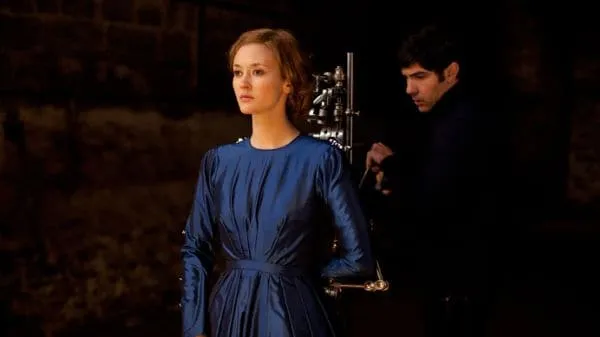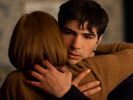Eye For Film >> Movies >> Daguerrotype (2016) Film Review
Daguerrotype
Reviewed by: Jennie Kermode

Daguerrotypes were developed in 1839. An early form of photography, they imprint an image onto a mirrored sheet of silver-coated copper. The process is slow; subjects must remain very still throughout. Small, involuntary movements create blurred edges, giving many portraits of this type a ghostly appearance.
Tahar Rahim is Jean, cast in the Gothic role of the young man venturing into a house where he will witness madness and fall helplessly in love. He's there looking for a job; Stéphane (Olivier Gourmet) approves him with such immediacy that one wonders what became of the other applicants. Stéphane is a maker of daguerrotypes; Jean becomes his assistant. All other forms of photography are considered unacceptable. Stéphane seems to be looking for something in those ghostly images, reaching into a deeper past in search of some trace of the wife he lost a few years previously.

Cursed by her resemblance to that wife is Marie (Constance Rousseau), a pale beauty turned a whiter shade by the bleaching effect of the image-making process. To satisfy her father's obsession, she is forced to hold poses for longer and longer periods. Metal supports hold her in place like one of the automatons through which the French, in particular, sought to capture life a century prior to the daguerrotype's emergence. Outside the house, where she swiftly falls for Jean - who may, after all, become her rescuer - she is intensely animated and full of life, her casual mannerisms at odds with her porcelain features. But the house seems to cast a spell over all who enter it. It's full of hidden spaces, full of the depths for which Stéphane vainly searches in his reflective creations.
Stéphane suffers from depression, irritability, exhaustion and hallucinatory distortions of perception: classic symptoms of mercury poisoning. Is he dying for his art? Jean is enlisted to try to persuade him to part with the house, which has caught the attention of a real estate developer. For all the nefarious intent in this scheme, it's not clear that it would actually be a bad thing for the ailing man - or for Marie, whose life seems to draining away, bled off into the images the way actors' emotions are drained to satisfy a cinematic audience.
Though he is working primarily in dark spaces, Kurosawa's images maintain the lucid quality that marks out his work, this time courtesy of cinematographer Alexis Kavyrchine. The director's alertness to colour is striking as always; even in busy street scenes, elements of turquoise or rusty red draw the eye, direct it where he wants it to go. Marie's hair, with its tones of copper and gold, combines with fabrics in shades of brass and verdigris to add to the impression that she is becoming more machine than human being, even as Jean begins to plot to take her away.
Like its subject, this is a film that takes time to develop. The different pace of events inside and outside the house makes for an interesting contrast but doesn't always work, and mainstream audiences are likely to resent the slower stretches. Working outside his familiar cultural context, Kurosawa delivers a film with less nuance than his usual fare, relying more on formula and archetype. The result is a piece that is ultimately more interesting in its form than its content, a treasure out of time. Its cultivated artificiality may seduce you; if not, you are likely to be left longing for the creations of his past.
Reviewed on: 02 Nov 2017

















